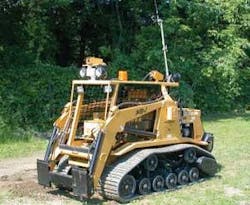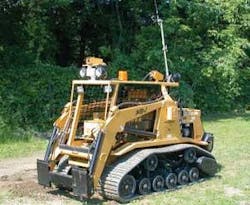Micro UAVs to make substantial impact over next few years
By John McHale
WASHINGTON-Analysts at Frost & Sullivan see micro unmanned aerial vehicles (UAVs) making a substantial impact on the global defense market over the next five years.
They will not impact in terms of dollars compared to large programs such as the Predator and the Global Hawk UAVs, but they will in terms of volume, says Michel Merluzeau, principal analyst, aerospace and defense at Frost & Sullivan.
One of the key players in Micro UAVs is AeroVironment in Monrovia, Calif. They produce the Dragon Eye Micro UAV for the Marine Corps, which recently ordered approximately 800,000 more, Merluzeau says. The Marines have been quite pleased with the performance of the Dragon Eye in Iraq, he adds.
AeroVironment develops small unmanned aerial vehicles (UAVs) for use in military surveillance, law enforcement, and civilian rescue efforts. Their Black Widow, developed with DARPA sponsorship, is a six-inch, electrically powered aircraft with a small camera that flies for 30 minutes at a range as far as 1.8 kilometers from the ground station while downlinking live color video.
Another miniature flying vehicle, an ornithopter dubbed Microbat, is in development. In its final form, Microbat is expected to weigh less than 15 grams, including controls and a miniature camera with down-link capability.
Another micro-UAV producer is Dragonfly Pictures Inc., (DPI) in Essington, Pa., creators of the Dragonlfy vertical takeoff and landing (VTOL) micro UAV.
DPI has been developing unmanned VTOL vehicle systems since 1992 for carrying stabilized sensor payloads and is offering several modular designs to cost effectively fulfill aerial imaging, payload delivery, and airborne sensor needs. For more on DPI see www.dragonflypictures.com.
Applied Research Associates’ robotics experts at the company’s Vertek division in S. Royalton, Vt., conduct research, development, and manufacture of automation technologies, including vehicle navigation, precision excavation, and heavy construction robotics. One of these is the All-Purpose Remote Transport System (ARTS). Designed for remote operation, the ARTS has been used for hazardous material handling, mine-clearing operations, and removal of unexploded ordnance.
The ARTS can fire a 90-mm water disrupter utilized for render-safe procedures on large-scale improvised explosive devices. This is one of the many tools available for the platform. The ARTS can be operated up to two miles away by radio frequency communications or via fiber optic.
They are attractive to battlefield commanders because of their ability to go behind enemy lines to provide intelligence and other tactical advantages, Merluzeau says.
Even in their large order volumes, micro UAVs will never generate as much money as the larger programs, but they will have a significant impact in the field, he adds.
These aircraft will also be stealthier than the larger birds such as the Predator, which is very noisy and could be heard from a long distance when it was first deployed in Kosovo, Merluzeau says.
The global market for UAVs in 10 years will be approximately $22 billion with the U.S. making up 75 to 80 percent of that number, he says.
In the long run The U.S. military would be wise to keep away from a one-size-fits-all procurement strategy for UAVs, Merluzeau says. They would be better served by having multiple vendors producing different aircraft.
For more on Frost & Sullivan’s research data go online at www.frost.com.

